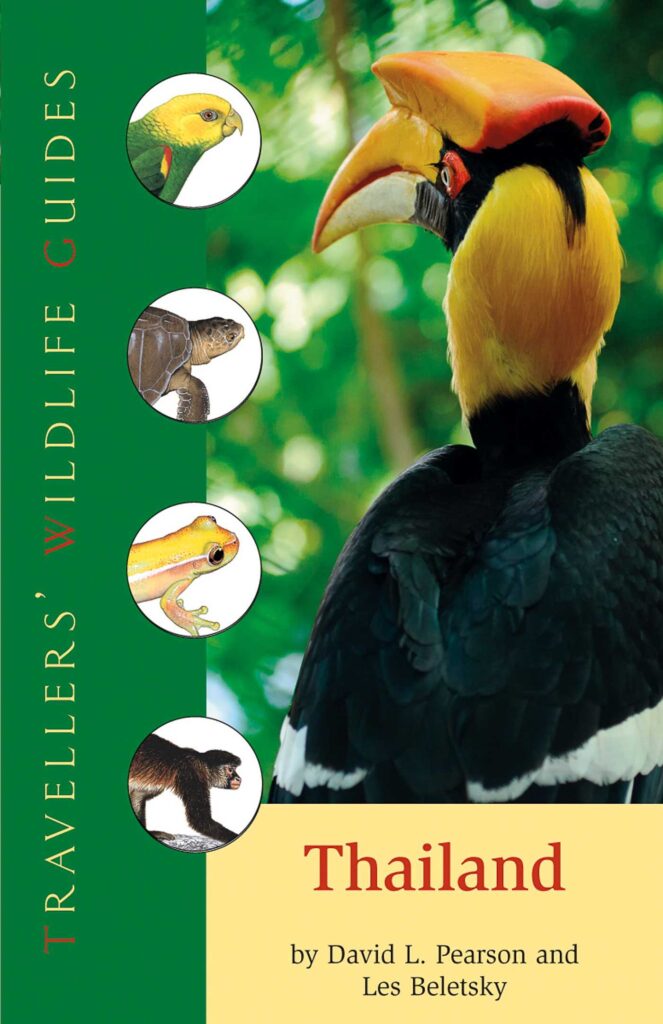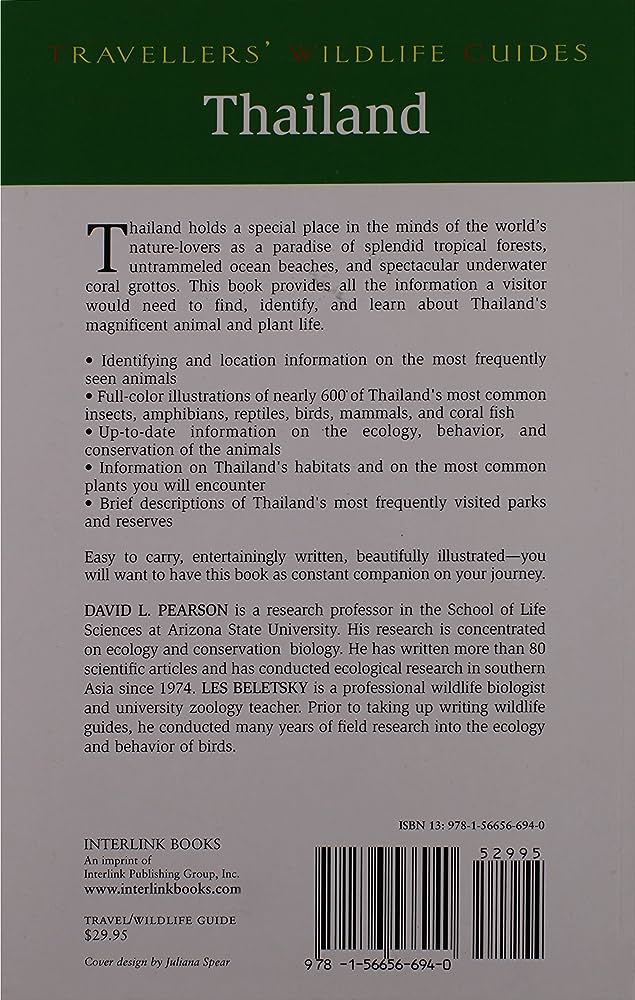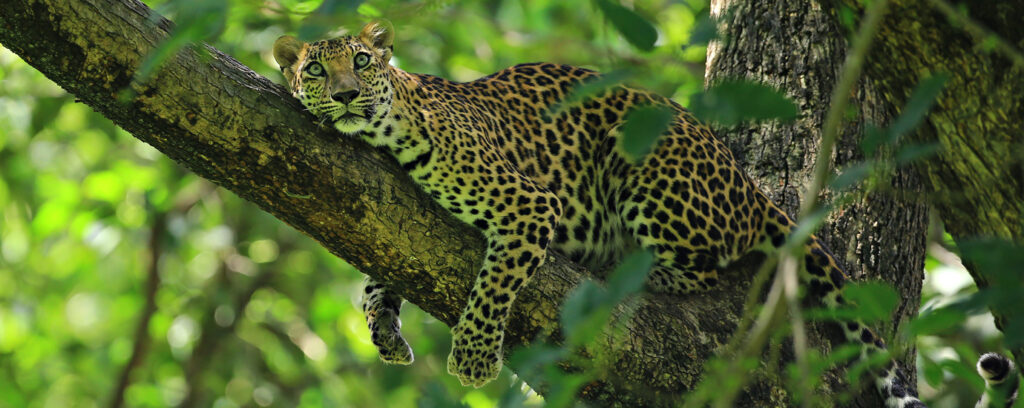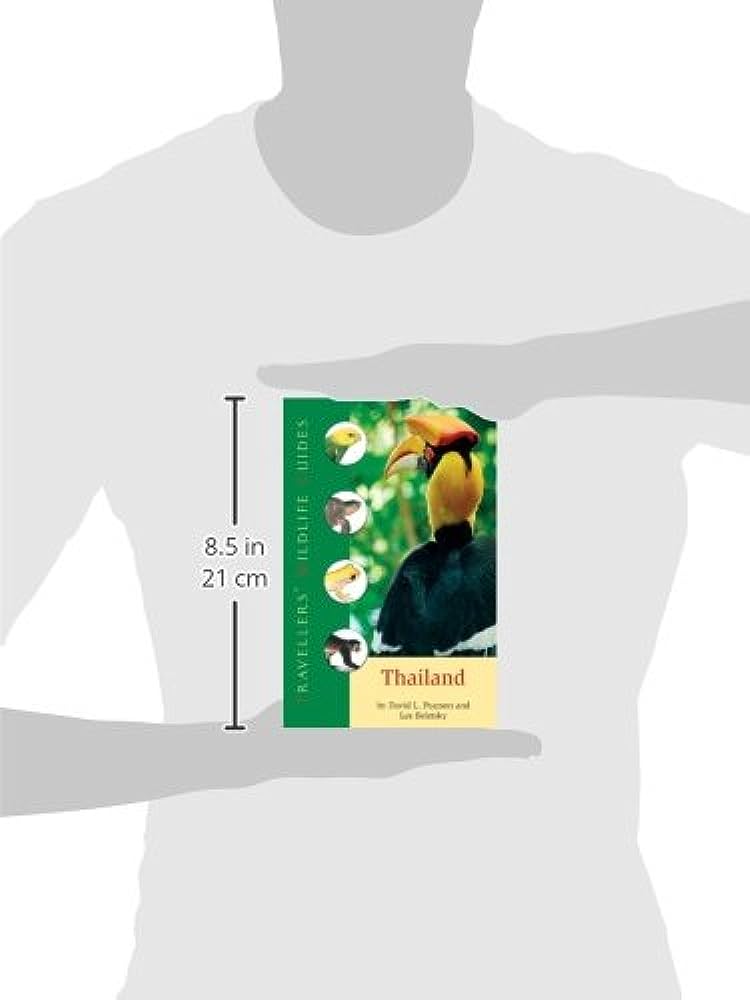Are you a nature enthusiast looking for a unique wildlife experience? Well, look no further than Thailand! This beautiful country is known for its stunning landscapes and diverse ecosystems, making it the perfect destination for anyone interested in exploring the wonders of nature. In this article, we will delve into the exotic wildlife that Thailand has to offer and provide you with a comprehensive guide on where to go to get up close and personal with these fascinating creatures.
Thailand is home to a wide variety of exotic wildlife, ranging from majestic elephants to colorful bird species and elusive big cats. One of the most iconic animals you can encounter in Thailand is the Asian elephant, and there are several ethical elephant sanctuaries across the country where you can observe and interact with these gentle giants in their natural habitat. If you’re more interested in birdwatching, Thailand boasts over a thousand bird species, including the stunning blue pitta and the majestic hornbill. For those seeking a thrill, a visit to one of Thailand’s national parks, such as Khao Yai or Doi Inthanon, will give you the chance to spot elusive creatures like leopards and tigers.
Whether you’re a seasoned wildlife enthusiast or just starting out, Thailand offers a multitude of opportunities to discover its exotic fauna. In the following sections, we will delve into the best locations to visit in order to see the country’s unique wildlife up close. From the breathtaking mountains of Chiang Mai to the sprawling rainforests of Khao Sok, there’s no shortage of exciting destinations to explore. So pack your bags, grab your camera, and get ready for an unforgettable adventure in Thailand’s wildlife paradise!
In the upcoming article, we’ll provide you with insider tips on the best times to visit, the top national parks and sanctuaries to explore, and how to make the most out of your wildlife encounters. We’ll also share important information about ethical wildlife tourism and how to ensure that your experiences are sustainable and beneficial to the animals. Whether you’re itching to see elephants roam freely or hoping to spot rare bird species, our guide will equip you with all the knowledge you need to embark on a memorable journey through Thailand’s exotic wildlife. Stay tuned!

Diverse Wildlife of Thailand
Thailand, located in Southeast Asia, is known for its stunning landscapes, pristine beaches, and vibrant culture. But what many people may not realize is that Thailand is also a biodiversity hotspot, home to a wide range of species and unique ecosystems. Whether you are an avid nature enthusiast or simply appreciate the beauty of the natural world, Thailand offers incredible opportunities to explore its exotic wildlife. From national parks and wildlife reserves to diverse mammals, birds, reptiles, and marine life, you will be amazed by the rich biodiversity that this country has to offer.
Biodiversity hotspot in Southeast Asia
Thailand is considered a biodiversity hotspot in Southeast Asia due to its high number of endemic species and unique ecosystems. Its geographical location, situated between the Indomalayan and Palearctic realms, has created a rich and diverse environment. With its dense forests, lush wetlands, and expansive coral reefs, Thailand is teeming with life. This country serves as a vital habitat for numerous plants, animals, and microorganisms, contributing to the overall ecological balance of the region.
Unique ecosystems supporting a variety of species
Thailand’s unique ecosystems play a crucial role in supporting a variety of species. From the evergreen forests of Khao Yai National Park to the montane forests of Doi Inthanon National Park, each ecosystem provides a home to a specific set of flora and fauna. These ecosystems are not only essential for the survival of individual species but also for the overall health and functioning of the entire ecosystem.
National Parks and Wildlife Reserves
If you are looking to experience Thailand’s diverse wildlife, a visit to its national parks and wildlife reserves is a must. These protected areas provide a safe haven for many endangered and vulnerable species, as well as offering visitors the chance to observe them in their natural habitat. Here are some of the top national parks and wildlife reserves you should explore:
Khao Yai National Park
Located just a few hours’ drive from Bangkok, Khao Yai National Park is the oldest and most famous national park in Thailand. Spanning over 2,000 square kilometers, it is renowned for its rich biodiversity and stunning landscapes. The park is home to a wide range of mammals, including elephants, tigers, gibbons, and Asian black bears. Bird enthusiasts will also be delighted by the presence of hornbills, kingfishers, pittas, and peafowls. With its diverse ecosystems and well-maintained trails, Khao Yai National Park offers countless opportunities for wildlife viewing and adventure.
Doi Inthanon National Park
For those seeking the beauty of Thailand’s mountains, Doi Inthanon National Park is a must-visit destination. Located in the northern part of the country, this park is famous for its majestic peaks and lush cloud forests. As the highest mountain in Thailand, Doi Inthanon offers a unique habitat for a variety of species, including mammals like elephants and tigers. The park is also a paradise for birdwatchers, with over 300 bird species recorded, including several rare and endemic species. Exploring the park’s picturesque waterfalls, nature trails, and viewpoints will leave you in awe of Thailand’s natural beauty.
Kaeng Krachan National Park
Situated on the border of Thailand and Myanmar, Kaeng Krachan National Park is the country’s largest national park, covering an area of over 2,900 square kilometers. This remote and unspoiled wilderness is a haven for wildlife, making it an ideal destination for nature enthusiasts. The park boasts a high diversity of mammal species, including elephants, tigers, and gibbons. Birdwatchers will be treated to sightings of various hornbills, kingfishers, and pittas. The lush rainforests, scenic rivers, and cascading waterfalls of Kaeng Krachan National Park make it a paradise for both wildlife and nature lovers.

Mammals
Thailand is home to a variety of mammal species, each with its own unique characteristics and habitats. Here are some of the iconic mammals you can encounter during your wildlife exploration:
Elephants
Elephants are a symbol of Thailand’s wildlife and culture. Known for their intelligence and social behavior, these gentle giants inhabit various national parks and wildlife reserves across the country. Observing elephants in their natural habitat is a memorable experience that allows you to witness their close-knit family dynamics and their important role in maintaining the balance of the ecosystem.
Tigers
Tigers are one of the most iconic and charismatic species in the world, and Thailand is fortunate to be home to a small but significant population of these majestic cats. While their numbers have greatly declined due to habitat loss and illegal hunting, efforts are being made to protect their remaining habitats and ensure their survival. Spotting a wild tiger in Thailand’s national parks is a rare and unforgettable experience that should be cherished.
Gibbons
Thailand’s forests are alive with the calls and acrobatic displays of gibbons. These small, agile primates are known for their distinctive songs that resonate through the treetops. Delicate and agile, gibbons swing effortlessly from branch to branch, showcasing their remarkable agility. Watching their elegant movements amidst the dense foliage is a truly enchanting experience.
Asian Black Bears
Asian black bears, also known as moon bears, are another notable species that can be found in Thailand’s forests. These bears have a distinctive crescent-shaped patch of white fur on their chests, giving them their name. While they are mainly herbivorous, their opportunistic feeding habits and scavenging abilities make them adaptable to various habitats. Observing these magnificent creatures from a safe distance is a unique wildlife encounter that will stay with you forever.
Birds
Thailand is a haven for birdwatching enthusiasts, attracting visitors from around the world with its incredible avian diversity. With over 1,000 bird species recorded, including several rare and endemic species, Thailand offers endless opportunities for bird enthusiasts to spot some of the most vibrant and elusive avian species. Here are a few of the birds you might encounter during your birdwatching adventure:
Hornbills
Hornbills are one of the most striking bird species in Thailand. With their large, colorful bills and distinctive calls, they are highly sought after by birdwatchers and nature lovers. They play an essential role in seed dispersal, making them vital for the regeneration of forests. Seeing these magnificent birds glide gracefully overhead is a truly awe-inspiring sight.
Kingfishers
Thailand’s rivers, lakes, and mangroves are home to a variety of kingfisher species. Known for their vivid plumage and unparalleled fishing skills, kingfishers are a delight to observe. Whether perched on a branch or diving headfirst into the water, their agility and striking colors make them a favorite among birdwatchers.
Pittas
Pittas are small, brightly colored birds that are known for their melodious songs and secretive nature. These elusive birds can be found in dense vegetation, where they forage for insects and small invertebrates. Spotting a pitta requires patience and a keen eye, but the reward is a glimpse of one of the most beautiful and captivating birds in Thailand.
Peafowls
The unmistakable beauty of the peafowl is a sight to behold. These large and colorful birds are known for their extravagant plumage and elaborate courtship displays. While the Indian peafowl is more commonly found in Thailand, both the male (peacock) and female (peahen) are equally stunning. Seeing a peacock proudly displaying its feathers is a mesmerizing experience that showcases the wonders of nature.

Reptiles and Amphibians
Thailand’s tropical climate and diverse habitats make it a haven for reptiles and amphibians. From venomous snakes to colorful frogs, there is a wide array of species to discover. Here are a few notable reptiles and amphibians you might encounter:
Green Pit Viper
The green pit viper is a venomous snake known for its vibrant green coloration. This snake is highly adaptable and can be found in a variety of habitats, from forests to plantations. Although its venom is potent, the green pit viper is generally non-aggressive and avoids human contact. Observing this snake from a safe distance allows you to appreciate its striking beauty without any danger.
Malayan Box Turtle
The Malayan box turtle is a unique species of turtle found in Thailand’s wetlands and rivers. Characterized by its distinct domed shell and bright yellow markings, this turtle is highly sought after by reptile enthusiasts. Its docile nature and terrestrial habits make it a fascinating species to observe in its natural habitat.
Giant Frog
Thailand is home to several species of large frogs, including the magnificent giant frog. As its name suggests, this frog reaches impressive sizes and can appear quite striking with its vibrant colors. Its deep croaking calls are often heard during the rainy season, adding to the enchantment of a nighttime wildlife excursion.
Tokay Gecko
The tokay gecko is a large, colorful gecko known for its loud and distinctive calls. This arboreal reptile can be found in forests and urban areas alike, often clinging to the sides of buildings or tree trunks. Its nocturnal habits make it a sought-after species for those who dare to venture out at night in search of wildlife.
Marine Life
Thailand’s marine ecosystems are equally as diverse and breathtaking as its terrestrial habitats. The country’s tropical seas are home to a plethora of marine life, including colorful coral reefs and magnificent sea creatures. Here are a few highlights of Thailand’s marine biodiversity:
Coral Reefs
Thailand is blessed with an extensive coastline that is dotted with vibrant coral reefs. These underwater ecosystems support a multitude of marine species, including fish, mollusks, and crustaceans. Snorkeling or diving in these crystal-clear waters will allow you to explore an underwater paradise filled with colorful coral formations and a kaleidoscope of marine life.
Whale Sharks
Thailand is one of the few places in the world where you can encounter the largest fish species, the whale shark. Despite their enormous size, whale sharks are gentle filter feeders that pose no threat to humans. Swimming beside these magnificent creatures in the warm waters of Thailand is an otherworldly experience that will leave you in awe of nature’s wonders.
Manta Rays
Manta rays are another awe-inspiring species that can be found in Thailand’s waters. Graceful and elegant, these gentle giants glide effortlessly through the ocean, captivating anyone lucky enough to encounter them. Diving alongside a manta ray provides a rare opportunity to witness the gracefulness and beauty of one of the ocean’s most majestic creatures.

Unique Species
Thailand is not just home to common wildlife species; it is also a haven for several unique and rare species that can only be found within its borders. These extraordinary creatures are a testament to Thailand’s rich biodiversity and the importance of conservation efforts. Here are a few examples of these unique species:
Giant Hairy False Scorpion
The giant hairy false scorpion, also known as the velvet crab spider, is an arachnid that resembles a scorpion but lacks a stinger. This rare and elusive species is found in the forests of Thailand and has a unique ability to camouflage itself among moss and lichens. Spotting one of these peculiar creatures requires a trained eye and a bit of luck, making it a thrilling find for any nature enthusiast.
Nasikabatrachus sahyadrensis
Nasikabatrachus sahyadrensis, more commonly known as the purple frog or the Indian purple frog, is a species of frog endemic to the Western Ghats of India and Thailand. This strange-looking amphibian spends most of its life underground, emerging only for a brief period during the monsoon season to breed. Its bulbous body and thick skin make it an unmistakable and fascinating addition to Thailand’s exotic wildlife.
Pink Orchid Mantis
The pink orchid mantis is a truly mesmerizing creature that perfectly blends in with its surroundings. This species is known for its stunning pink coloration and its ability to mimic the appearance of an orchid flower. These masterful camouflagers are most commonly found in Thailand’s forests, where they patiently wait for unsuspecting prey to come within striking distance. Observing a pink orchid mantis up close will leave you in awe of nature’s extraordinary adaptations.
Threats to Wildlife Conservation
While Thailand is undoubtedly a haven for exotic wildlife, it is also facing numerous threats that jeopardize the survival of many species. These threats must be urgently addressed to ensure the long-term conservation of Thailand’s rich biodiversity. Here are some of the major challenges facing wildlife conservation in Thailand:
Habitat loss due to deforestation
The rapid expansion of agriculture, urbanization, and infrastructure development has led to extensive deforestation in Thailand. Forests, which serve as critical habitats for numerous species, are being destroyed at an alarming rate. The loss of habitat has a devastating impact on wildlife populations, pushing many species to the brink of extinction. Efforts to combat deforestation and protect the remaining forests are crucial for the future of Thailand’s wildlife.
Illegal wildlife trade
Thailand has been a major hotspot for the illegal wildlife trade, with its diverse range of species being targeted for their exotic skins, body parts, and live specimens. This illicit trade not only poses a threat to the survival of endangered species but also undermines the country’s conservation efforts. Strict enforcement of legislation, along with public awareness campaigns, is necessary to combat this destructive trade and protect Thailand’s unique wildlife.
Climate change impacts
Climate change is another significant threat to Thailand’s wildlife. Rising temperatures, changing rainfall patterns, and increased frequency of extreme weather events can disrupt ecosystems, alter migration patterns, and exacerbate habitat loss. These changes pose a challenge for both wildlife and conservationists. Mitigating the effects of climate change through sustainable practices and raising awareness about its impacts are essential for the long-term survival of Thailand’s diverse wildlife.

Conservation Efforts
Despite the challenges, Thailand is making significant strides in wildlife conservation. The Thai government, in collaboration with local and international organizations, has established protected areas and conservation projects across the country. These initiatives aim to safeguard critical habitats, rehabilitate endangered species, and promote sustainable practices. Additionally, community-based ecotourism initiatives have been successful in generating income for local communities while raising awareness about the importance of wildlife conservation.
Protected areas and conservation projects
Thailand currently has over 100 national parks, wildlife sanctuaries, and non-hunting areas that provide vital protection to its diverse ecosystems and wildlife. These protected areas are managed by government agencies and local communities, with the goal of preserving biodiversity and promoting sustainable tourism. Conservation projects within these areas focus on habitat restoration, species monitoring, and community engagement, ensuring the long-term survival of Thailand’s unique wildlife.
Community-based ecotourism initiatives
Community-based ecotourism initiatives have emerged as a successful model for sustainable wildlife conservation in Thailand. These initiatives involve local communities in conservation efforts and provide them with alternative livelihood options that are centered around preserving the natural environment. By engaging with tourists and showcasing Thailand’s wildlife in a responsible manner, these initiatives create economic incentives for protecting wildlife and its habitat.
Conclusion
Thailand offers a treasure trove of biodiversity, with its exotic wildlife and unique ecosystems captivating visitors from around the world. From the lush rainforests of Khao Yai National Park to the vibrant coral reefs of the Andaman Sea, there is a world of natural wonders waiting to be explored. However, the survival of Thailand’s wildlife relies on our collective efforts to protect their habitats, combat illegal wildlife trade, and address the impacts of climate change. By supporting conservation initiatives and practicing responsible tourism, we can ensure that future generations can also experience the diverse and enchanting wildlife that Thailand has to offer. So, pack your bags, grab your binoculars, and embark on a journey to explore Thailand’s exotic wildlife – a world full of endless wonders and unforgettable encounters.
